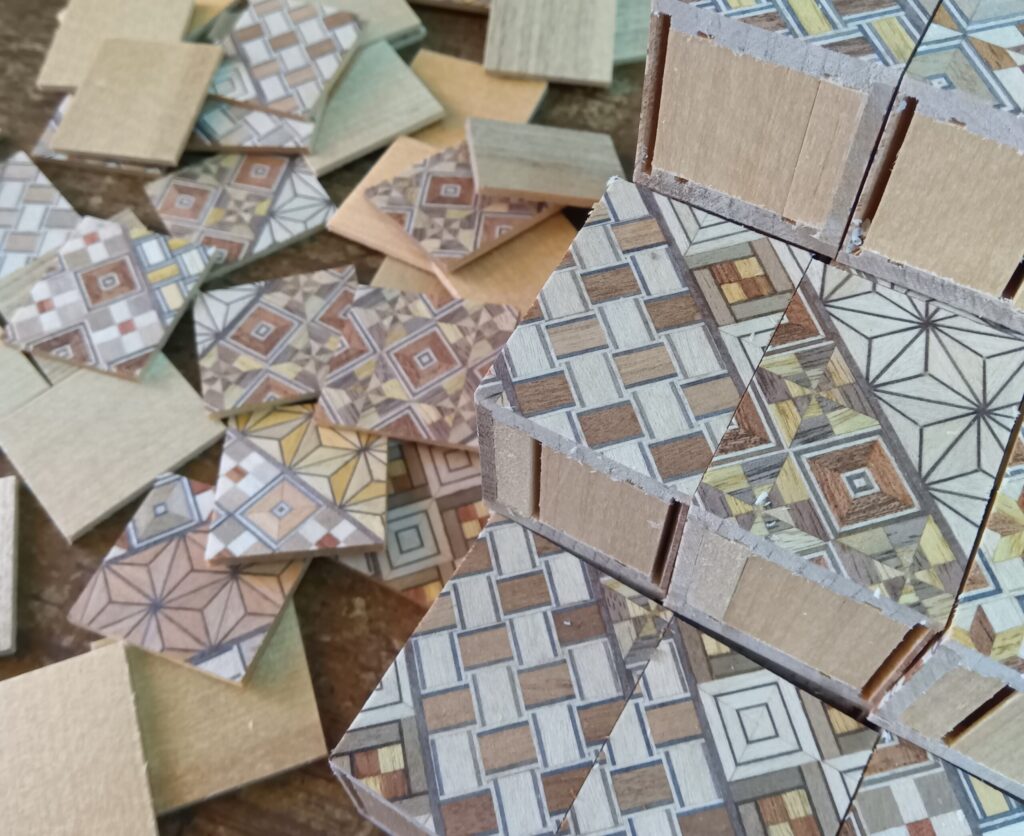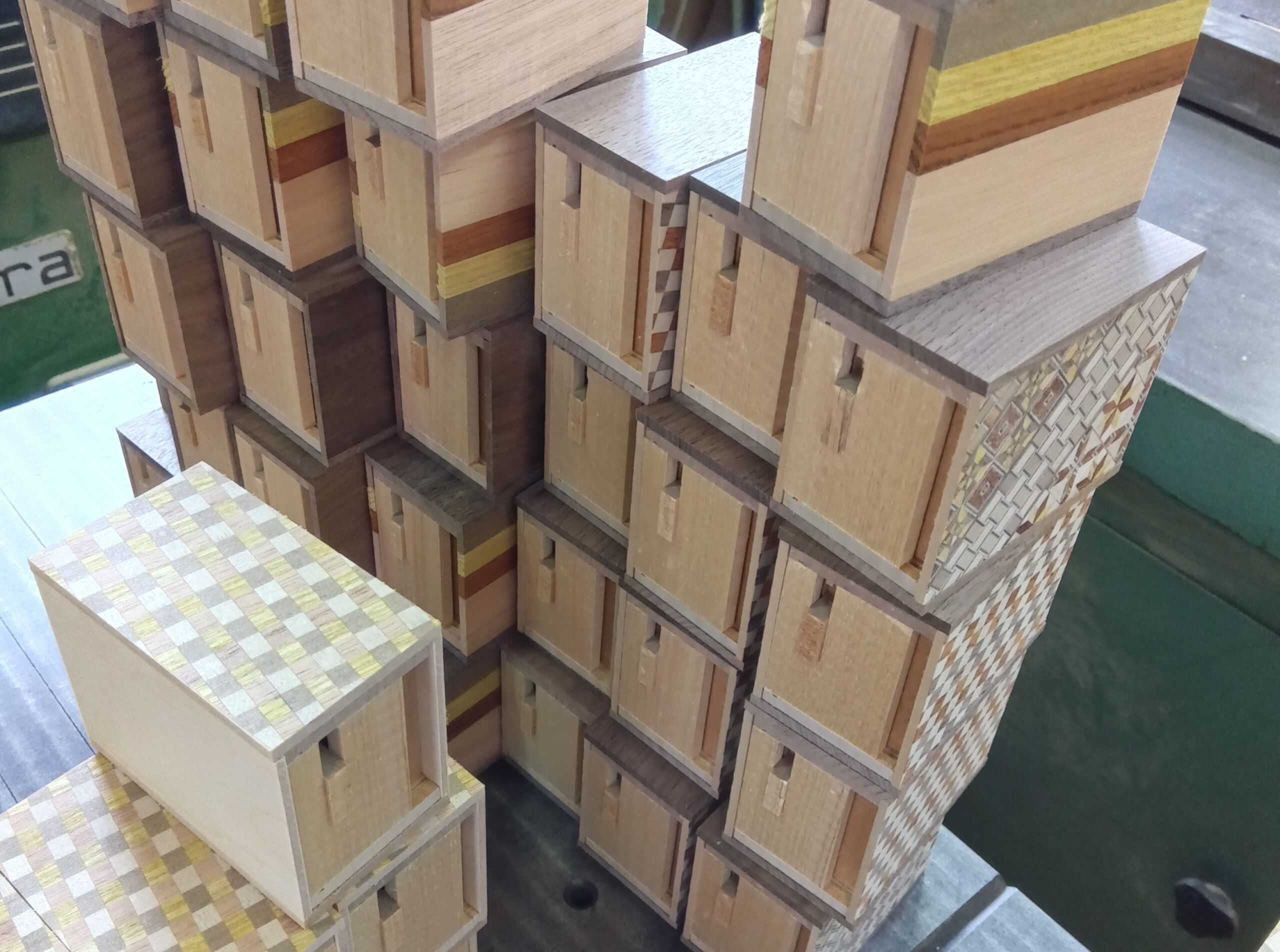08-May-2025
Today was another beautiful day, and I continued the work from yesterday. Right now, I’m in the process of attaching the side panels to the moving parts of each box, so this sunny weather is very helpful. This is one of the tasks I prefer to do on clear, dry days.
In the morning, I attached the three-piece sliding key panel (Kannuki panels) to the 3-sun 12-step boxes, which I had glued with the long side panels yesterday. First, I attach a small wooden piece called a “bocchi” to the puzzle box. The tightness of this bocchi affects how smoothly the sliding key moves, so it’s an important step. The width of the bocchi varies depending on the puzzle box, but for the 3-sun type, I use the smallest one — just 6 mm wide. The sliding key is attached to this 6 mm strip and moves in coordination with it.
After attaching the bocchi, I sand the surface flat — including the bocchi — to prepare for attaching the sliding key panel. Since the sliding key panel is divided into three parts, I apply glue to each piece and attach them one by one. It’s a delicate and detailed task. For the center piece, which functions as the sliding key, I apply glue only to the bocchi. If glue spreads to other areas, the sliding key may stick and won’t move, so I have to be very careful to avoid any excess glue.
Today, I attached the panel on one side of the box. I will attach the other side tomorrow.
In the afternoon, I also worked on attaching the panels for two types Mame himitsu-bako, which I had prepared earlier but hadn’t glued yet. These panels don’t have sliding keys, but they are moving panels attached to the Aruki sides. Since the gluing area is small, it’s best to do this kind of work on dry days like today.
This time, there are about 50 of the 18-step boxes and around 100 of the 4-step boxes, so the total number is similar to the 14-step boxes I made recently. As expected, it took quite a bit of time. Staying in the same position for a long time while working definitely makes my shoulders stiff…😅
The panel shapes are different between the 18-step and 4-step boxes, so the gluing pace also changes slightly. The 4-step panels might be a little easier to glue. When attaching panels to the mame himitsu-bako, the box body itself is not processed at all—unlike other puzzle boxes. With standard puzzle boxes, the surface is usually shaved flat before attaching panels, but for this box, the panels are glued directly onto the assembled structure.One reason is that, because the box is so small, the surface tends to stay flat even without shaving. On the other hand, if I try to shave the surface, there’s a high risk of overdoing it and ruining the shape due to the small size. That’s why it’s very important to assemble the box perfectly flat from the beginning. When attaching the top panel, I also cut it to exactly the right size so that nothing sticks out — there’s no room for trimming or adjusting afterward. Each step in the process is very important, since there’s no chance for correction later.
Tomorrow, I would like to do the finishing work on the Mame himitsu-bako if possible, but I’ll decide based on the weather.



